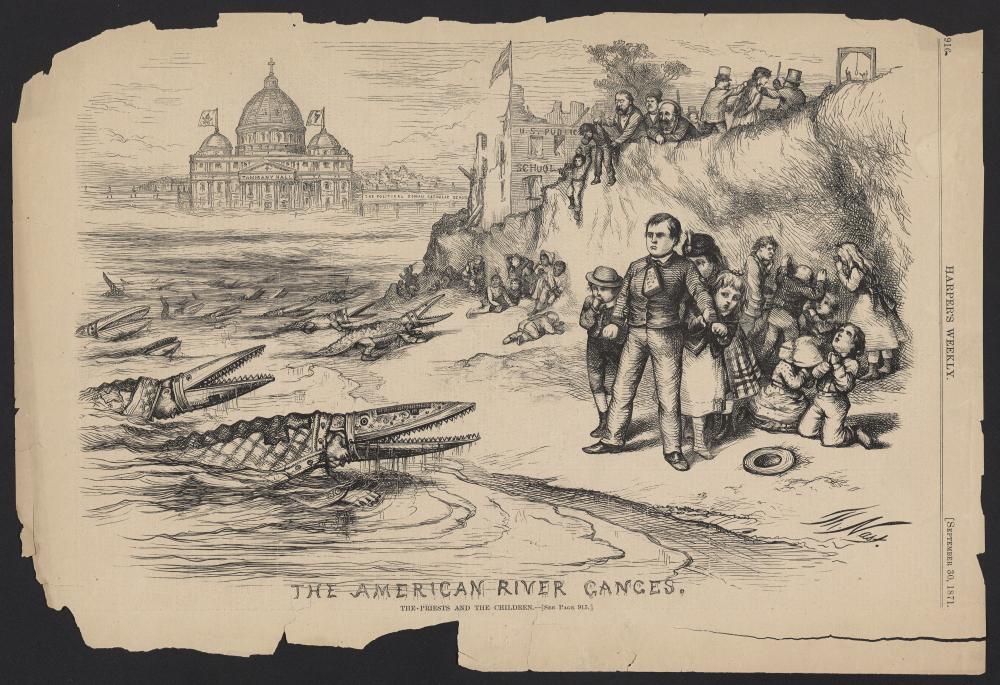What Nonprofits Need to Know About Works Made for Hire
Nonprofits often work with a variety of artists, thought leaders, and scholars when they create content, including graphic designers, animators, professors, authors, and even musicians. Outside experts can help to create strong curricula, sermons, blog posts, videos, or whatever else an organization may need. As they enter these business relationships, nonprofits will ask themselves questions like “how much will it cost?”; “do I like the art style?”; and “again, how much will it cost?”
But most will never think to ask “who owns it?”
It’s taken for granted that hiring someone to do a task or paying for a service gives someone ownership of the final product. Adam pays Bob to paint his deck, and Bob does not get to take the deck home with him or throw a barbeque on it next weekend. But when someone works with an artist to create a copyrightable work, ownership of the copyright is not that simple.
Two Possibilities
Generally, the author of a copyrightable work, rather than the recipient, owns the copyright. However, the Copyright Act, 17 U.S.C. § 201 specifies that when a work is “made for hire,” the employer or person who commissioned the work is considered the owner, which means that person is considered the author for legal purposes.
When is a work “made for hire”?
A work is “made for hire" in one of two scenarios. The first is straightforward enough: when the work is created by an employee within the scope of his or her employment, it’s a work made for hire and owned by the employer.
A work may also be considered a work made for hire when it’s ordered or commissioned:
(1) as a contribution to a collective work (e.g., a periodical, anthology, or encyclopedia);
(2) as a part of a motion picture or other audiovisual work;
(3) as a translation;
(4) as a supplementary work (e.g., a foreword or afterword, pictorial illustrations, maps, charts, tables, or editorial notes);
(5) as a compilation (preexisting materials assembled into a new work);
(6) as an instructional text;
(7) as a test;
(8) as answer material for a test; or
(9) as an atlas.
Outside of these enumerated categories, a work is not considered a work for hire, and the artist owns the copyright.
Why should I care who owns the copyright?
You should always be clear about who owns the copyright to a creative work—after all, it affects who can distribute it and who receives royalties from doing so—but you may not always want to be the sole copyright owner.
Case Study 1
You run a Christian nonprofit that primarily seeks to educate the public, and you want to create a video with lots of bold text and infographics to illustrate your arguments. If you don’t want to hire a full-time employee to do this task, you might contract with a self-employed graphic designer to create the designs for you. The content you provide to this person is all yours— the numbers, the arguments, and the specifications of how you want it to look—and the designer creates the video exactly as he or she was hired to do.
Case Study 2
You run a Christian nonprofit, but this time, your goal is to influence culture by offering commentary on political and cultural events. So, you reach out to a popular comedian, who creates a sketch comedy video on your behalf—in which he or she plays a character—to offer a Christian perspective on a current news event. There was some input from you, but ultimately, you let the comedian do the bulk of the writing to ensure that the final product is as funny as it could be.
In the first case study, you would probably want the video to be considered a work made for hire, because the video was the result of your ideas and input, using the graphic designer’s skill to send your message. The designer should not be able to monetize the video as if it’s entirely his or her own.
However, in the second scenario, you may not want to consider the video a work for hire. The comedian, having come up with many of the ideas and jokes, may want a share of the proceeds from monetizing it. Further, the comedian may want to use the character he or she developed in the video in future works. These hangups might quickly become dealbreakers. In such a situation, it might make sense to license the video’s content from the comedian or agree to joint ownership of the copyright and split the royalties. If you are trying to work with talented, well-known artists or public figures, it may be worthwhile to consider these alternative arrangements.
What should I do?
Nonprofits should do whatever will guarantee the best results for them. Expressly creating a work for hire relationship may best serve them in one situation, while stipulating to a license or joint ownership of a copyright might work better in another situation. There’s no one-size-fits-all answer. If you are unsure about how to proceed with the creation and ownership of content for your organization, the best answer is to consult with an attorney and to draft a clear contract that does what your organization wants it to do.
.png)




